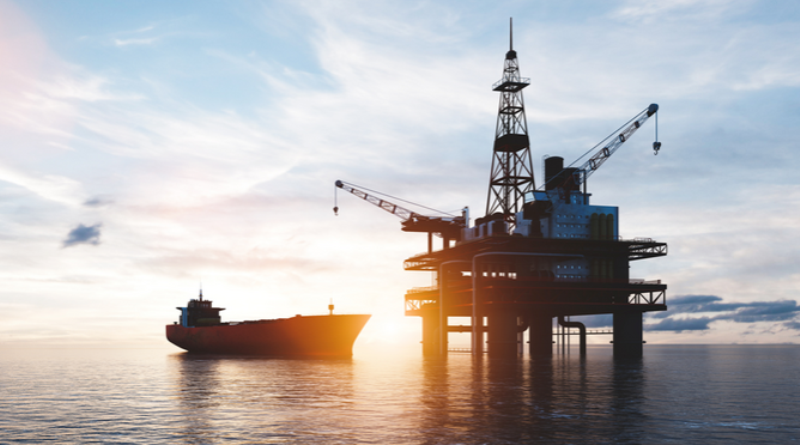‘Global oil demand growth is slowing sharply’: IEA credits ‘surging EV sales’ for weakening oil demand
Latest monthly update reveals how China’s EV and rail boom is eating into global fossil fuel demand and dampening oil prices
Oil prices have fallen sharply in recent months on the back of slower than expected demand growth, and the trend is expected to continue as the global roll out of clean technologies continues to accelerate.
That is the headline finding from the International Energy Agency’s (IEA) latest monthly oil market report, which raises questions about how oil producers will respond “when the music stops” and global oil demand peaks, likely before the end of this decade.
The report details how global oil demand growth continued to decelerate during the first half of the year, with gains of 800,000 barrels per day (b/d) representing the slowest growth since the pandemic.
The main driver behind the slowdown was falling demand from China, where consumption contracted year-on-year for a fourth straight month in July, falling by 280,000 b/d.
The fall in Chinese demand was partly a result of economic headwinds in the country, but the IEA said it was also because “surging EV sales are reducing road fuel demand while the development of a vast national high-speed rail network is restricting growth in domestic air travel”.
In addition, the report highlighted how oil demand growth outside of China was “tepid at best”, resulting in average annual gains of 900,000 b/d in 2024, compared to 2.1m b/d last year.
Oil prices have fallen on the back of this subdued demand. “Brent crude oil futures have plunged from a high of more than $82 a barrel (bbl) in early August to a near three-year low at just below $70/bbl on 11 September, despite hefty supply losses in Libya and continued crude oil inventory draws,” the report stated.
The IEA predicted lower prices should result in demand growth being slightly higher in 2025 at 950,000 b/d, but it also suggested the market remains on track for a plateauing in oil demand by the end of the decade.
In comments reported by the FT, IEA chief Fatih Birol said there was growing evidence booming clean tech demand was impacting oil markets. “In the last 10 years, around 60 per cent of global oil demand growth has come from China,” he said. “Now the Chinese economy is slowing down… There is a very strong deployment of electric vehicles and improvement in fuel efficiency. As a result, the oil price fell substantially.”
The bearish sentiment presents a challenge to OPEC, which is seeing its ability to control supplies and prices eroded by increased production from non-OPEC members.
The latest data also represents something of a vindication of the IEA’s previous projections suggesting global oil demand is nearing a peak, as EVs and other clean technologies chip away at demand.
“We got some pushback from some corners with suggestions that our numbers were a result of some energy transition wishful thinking,” Birol said, referencing some of the criticism publicly aimed at the agency by OPEC and others. But the latest report provides further evidence that technological, behavioural, and demographic shifts are causing oil demand to decouple from underlying GDP growth.
The IEA’s latest intervention came in the same week as a new report from the Institute for Energy Economics and Financial Analysis (IEEFA) think tank revealed how European LNG import terminals are being utilised less as demand for the fossil fuel continues to decline across the continent.
The latest edition of IEEFA’s European LNG Tracker confirms that after falling to a 10-year low in 2023, Europe’s gas consumption shrank by 5.4 per cent year on year in the first half (H1) of 2024. EU gas consumption dropped by three per cent over the same period.
Consequently, European LNG imports declined by 20 per cent in Europe and EU imports fell 11 per cent during the first half of the year. The average utilisation rate of the EU’s terminals fell from 62.8 per cent in the first half of 2023 to 47.2 per cent for the same period in 2024.
“The continent has likely already passed peak LNG consumption,” the think tank said. “IEEFA forecasts that Europe’s demand for the fuel will drop by a further 37 per cent by 2030.”
The slowdown in demand has significant implications for Europe’s plans to build out more LNG import terminal capacity in response to Russia’s invasion of Ukraine and the resulting move to end reliance on gas imported by pipeline from Russia.
“Europe’s LNG terminal construction spree might be coming to an end, with some countries delaying or cancelling infrastructure,” said Ana Maria Jaller-Makarewicz, lead energy analyst for Europe at IEEFA. “Since the beginning of 2023, new terminals or expansions have been shelved in Albania, Cyprus, Ireland, Latvia, Lithuania and Poland. It is unclear whether three planned terminals in Greece will go ahead.”
The report warned that despite falling LNG demand, many European countries are still planning investments in new import infrastructure. It predicted that by 2030 three-quarters of the continent’s LNG import capacity could be unused.
IEEFA also highlighted how Europe continues to import LNG from Russia, despite the goal of ending its reliance on Russian fossil fuels by 2027. But it also signalled how measures to curb gas demand meant it should be possible to end Russian imports with jeopardising energy security.
“Ukraine’s natural gas transit deal with Russia will expire at the end of this year,” IEEFA said. “As Europe’s LNG imports keep decreasing, it is unlikely that the continent’s security of supply will be affected if the agreement is not extended. Europe reduced its LNG imports by 18 billion cubic metres (bcm) between H1 2023 and H1 2024. This decrease is more than the 14.6 bcm of Russian gas exported to Europe via Ukraine in 2023.”
Source: businessgreen.com




